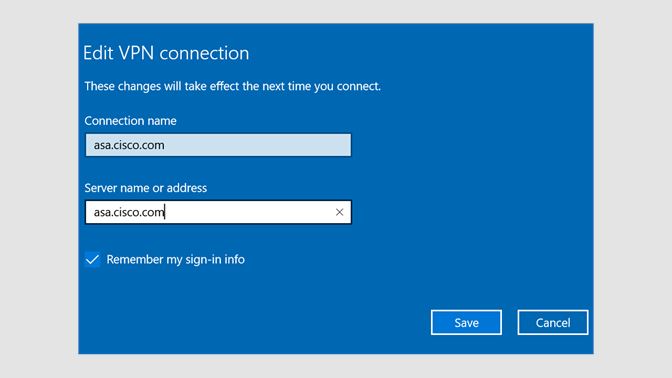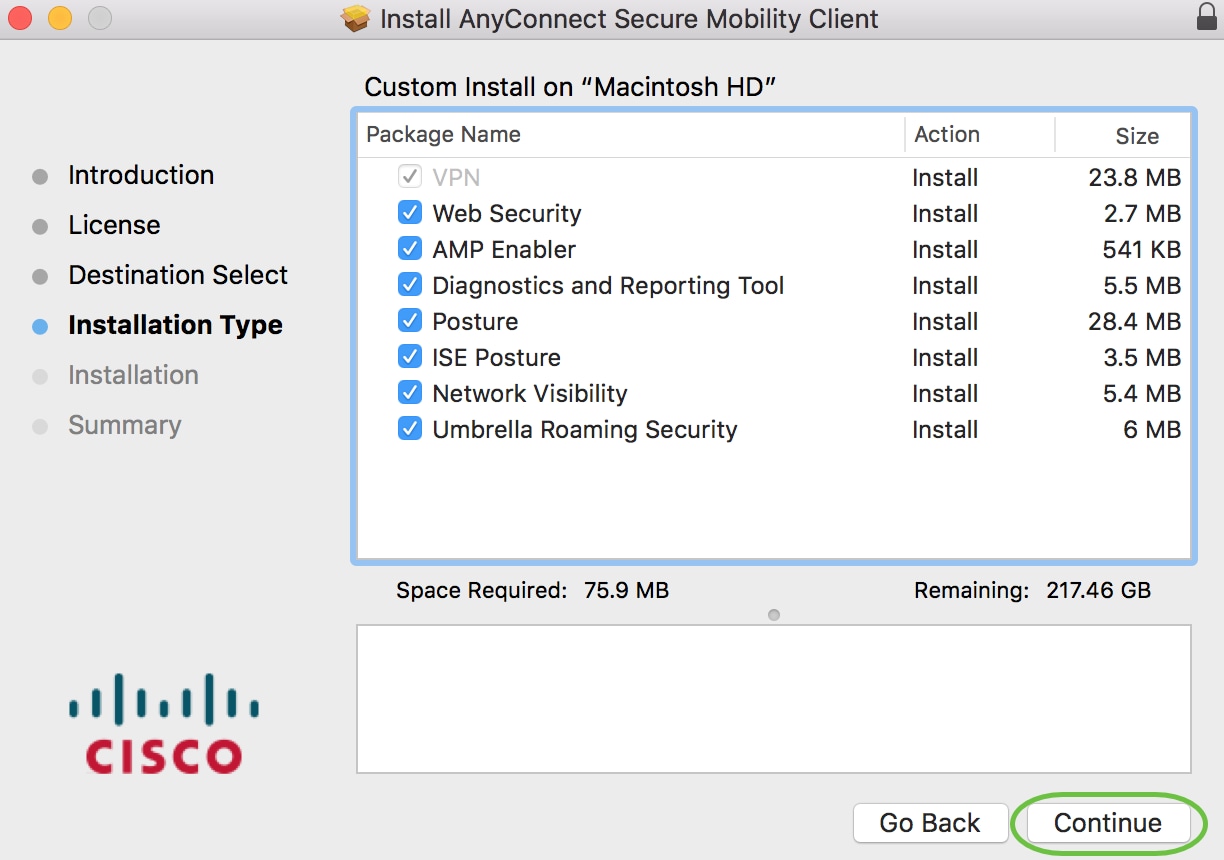Download Cisco Anyconnect Download
Free cisco anyconnect vpn client download. Internet & Network tools downloads - Cisco VPN Client by Cisco Systems, Inc. And many more programs are available for instant and free download. Mar 16, 2021 Download the Cisco AnyConnect VPN client in the Related Download box in the upper-right of this page. Download the.zip file. Open the folder where the zip downloaded. Double click on the zip folder. Double click on the installer file. When the Setup Wizard starts, click Next to continue. Download and configure the new UCSD Virtual Private Network (VPN) AnyConnect client on your Windows 10 Desktop and Tablet for a conventional installation. In the right place? If you only need to access common campus Web sites or remote desktop computing, use the VPN EasyConnect option. Aug 26, 2016 Enable Additional AnyConnect Modules. To enable additional features, specify the new module names in the group-policy or Local Users configuration. Be aware that enabling additional modules impacts download time. When you enable features, AnyConnect must download those modules to the VPN endpoints.
- Cisco Anyconnect Download Mac Download
- Cisco Anyconnect 4.9.01095 Download
- Download Cisco Anyconnect Windows 10 64 Bit
- Cisco Anyconnect Download Windows 10
- Cisco Anyconnect Download Windows10
For additional information, refer to the AnyConnect configuration guide.
Client Download
Unlike the ASA, the MX does not support web deploy or web launch, a feature that allows end users to access a web page on the AnyConnect server to download the AnyConnect client. With the MX, there are download links to the client software on the AnyConnect settings page on the dashboard, however, the download links are only available to the Meraki dashboard admin and not the end user. We do not recommend sharing the down link with users as the link expires after every five minutes of loading the AnyConnect settings page.
We recommend downloading the AnyConnect client directly from Cisco.com as there may be an updated version in the Cisco repository. Refer to the doc for the AnyConnect clientrelease notes. We also recommend using either Meraki Systems Manager, an equivalent MDM solution, or Active Directory to seamlessly push the AnyConnect software client to the end user's device.
AnyConnect requires a VPN client to be installed on a client device. The AnyConnect client for Windows, MacOS, and Linux are available on the Client Connection section of the AnyConnect configuration page on the dashboard and can be downloaded by a Meraki dashboard administrator. Please note, the download links on the Meraki dashboard expire after five minutes. The AnyConnect client for mobile devices can be downloaded via the respective mobile stores. You can also download other versions (must be version 4.8 or higher) of the AnyConnect client from Cisco.com if you have an existing AnyConnect license. AnyConnect web deploy is not supported on the MX at this time.
- Installing the AnyConnect client
- You only need the VPN box checked. Once the client has been installed on the device, open the AnyConnect application and specify the hostname or IP address of the MX (AnyConnect server) you need to connect to.
AnyConnect Profiles
An AnyConnect profile is a crucial piece for ensuring easy configuration of the AnyConnect client software, once installed. The MX does not support the use of custom hostnames for certificates (e.g. vpn.xyz.com). The MX only supports use of the Meraki DDNS hostname for auto-enrollment and use on the MX. With the Meraki DDNS hostname (e.g. mx450-xyuhsygsvge.dynamic-m.com) not as simply as a custom hostname, the need for AnyConnect profiles cannot be overemphasized. Profiles can be used to create hostname aliases, thereby masking the Meraki DDNS with a friendly name for the end user.
Cisco AnyConnect client features are enabled in AnyConnect profiles. These profiles can contain configuration settings like server list, backup server list, authentication time out, etc., for client VPN functionality, in addition to other optional client modules like Network Access Manager, ISE posture, customer experience feedback, and web security. It is important to note that at this time, the Meraki MX does not support other optional client modules that require AnyConnect head-end support. For more details, see AnyConnect profiles.
When a profile is created, it needs to get pushed to the end user's device. There are three ways to do this.
1. Through the AnyConnect server (MX): If profiles are configured on the dashboard, the MX will push the configured profile to the user's device after successful authentication.
2. Through an MDM solution: Systems Manager, an equivalent MDM solution, or Active Directory can be used push files to specific destinations on the end user's device. Profiles can also be pushed to the following paths:

Windows
%ProgramData%CiscoCisco AnyConnect Secure Mobility ClientProfile
Mac OS X
/opt/cisco/anyconnect/profile
Linux
/opt/cisco/anyconnect/profile
3. Manually: Profiles can also be preloaded manually to the same paths as listed above.
How to Create a Profile
Profiles can be created using the AnyConnect profile editor. The profile editor can be downloaded from the AnyConnect Settings page on dashboard or on cisco.com. Refer to this link for more details on AnyConnect profiles.
Using the profile editor: The profile editor can be downloaded from the AnyConnect Settings page on dashboard or on Cisco.com. The profile editor only runs on Windows operating systems. The screenshot below shows a configured server ton the Server List Entry option.
When configuration is complete, save the profile. It is recommended to use a unique file name to avoid profile overrides by other AnyConnect servers, then you can upload the file to the profile update section on the AnyConnect settings page.
Please note that only VPN profiles are supported on the MX at this time. This means you cannot push NVM, NAM, or Umbrella profiles via the MX.
- Select enable profiles, upload your xml file, and save your configuration
- After a user successfully authenticates, the configured profile gets pushed to the user's device automatically
- The result of the .xml can be seen below, after successful authentication to the AnyConnect server; this gives users the ease of selecting VPN servers on the AnyConnect client
The Meraki DDNS hostname is not easy to remember, therefore end users are not expected to use it directly. Profiles should be used to make connecting to the AnyConnect server easy for end users.
Cisco Anyconnect Download Mac Download
Download and configure the new UCSD Virtual Private Network (VPN) AnyConnect client on your Windows 10 Desktop and Tablet for a conventional installation.
In the right place? If you only need to access common campus Web sites or remote desktop computing, use the VPN EasyConnect option. See instructions in Virtual Private Networks at UCSD.
Notes:
- You must log into your computer with administrator rights.
- You need your Active Directory (AD) username and password. If you don't remember your AD username or password, you can either reset it at https://adweb.ucsd.edu/adpass/ or contact your department's systems administrator.
- ACT is testing the support of SBL (Start Before Login) on Windows-based machines.

1. Download the UCSD VPN AnyConnect client
- Download the VPN AnyConnect client (UCSD login required).
- Click Run.
2. Begin the installation
3. Accept the license agreement
- Accept the terms, and click Next.
Cisco Anyconnect 4.9.01095 Download
4. Continue the installation
- Click Install.
- You may be asked if you want to allow the following program to intall software on this computer
- Click Yes
- Click Yes
5. Finish the installation
- Click Finish
- Restart your system
- Settings/Power/Restart
- Settings/Power/Restart

6. Run the AnyConnect client
- Click on the Windows Start Button (this will display the Windows Start Menu). Click on All Apps and choose the Cisco Folder. Proceed with selecting the Cisco AnyConnect Secure Mobility Client to launch.
7. Authenticate with UCSD VPN using DUO 2-Step Authentication
- In the first window, enter vpn.ucsd.edu in the box and click on the “Connect” button to the right
- A second window will appear. Select your desired connection profile from the Group drop-down menu:
- 2-Step Secured - allthruucsd – Route all traffic through the UCSD VPN. Use this when accessing Library resources and CMS website staging links. This is the preferred method.
- 2-Step Secured - split – Route only campus traffic through the UCSD VPN. All other traffic goes through your normal Internet provider.
- In the Username field, enter your Active Directory (AD) username
- In the Passcode field, use the following to authenticate through DUO (See Two-Step Login: VPN for further details):
- If you receive DUO push notifications on your mobile phone enter:
- yourADpassword,push
- If you receive a DUO phone call to authenticate, enter:
- yourADpassword,phone
- If you use a DUO token to generate a passcode enter:
- yourADpassword,6digitpasscodefromtoken
- If you receive DUO push notifications on your mobile phone enter:
- Click OK.
Download Cisco Anyconnect Windows 10 64 Bit
8. Disconnect

Cisco Anyconnect Download Windows 10
- Click on the Windows Start Button (this will display the Windows Start Menu). Click on All Apps and choose the Cisco Folder. Proceed with selecting the Cisco AnyConnect Secure Mobility Client.
- When the window appears, select Disconnect.
Cisco Anyconnect Download Windows10
